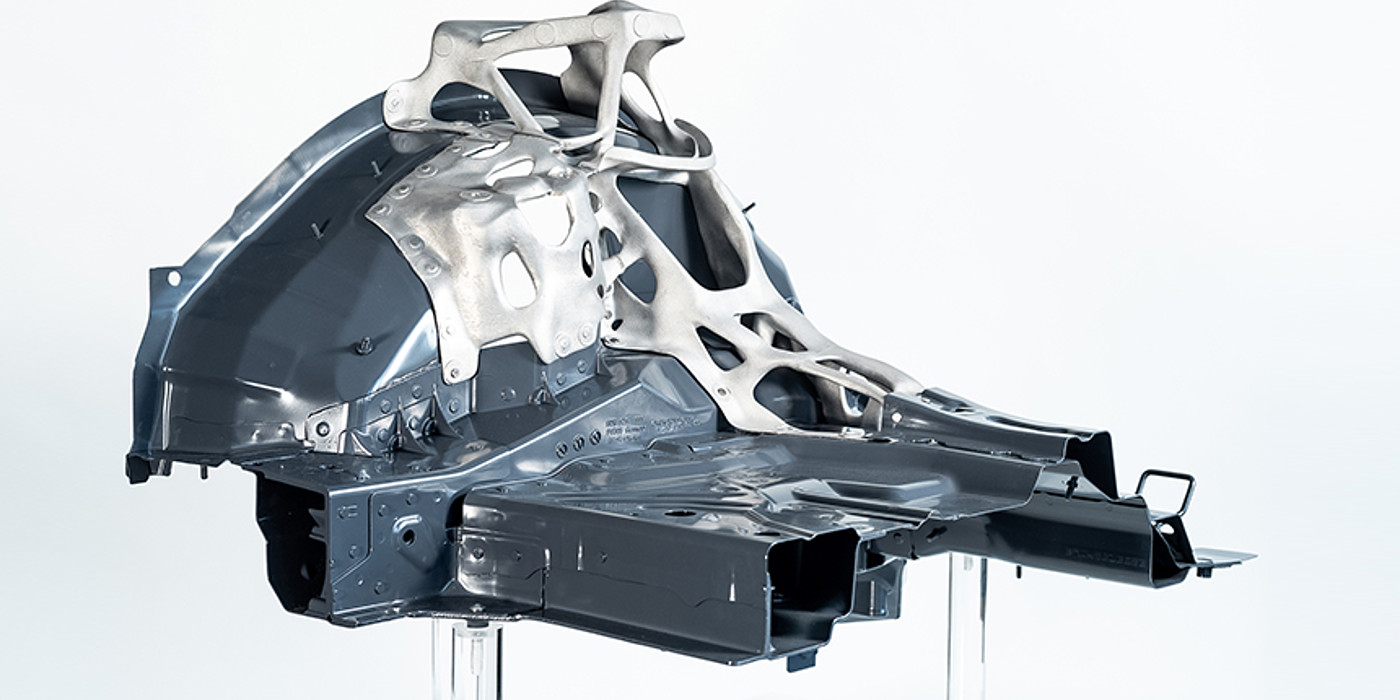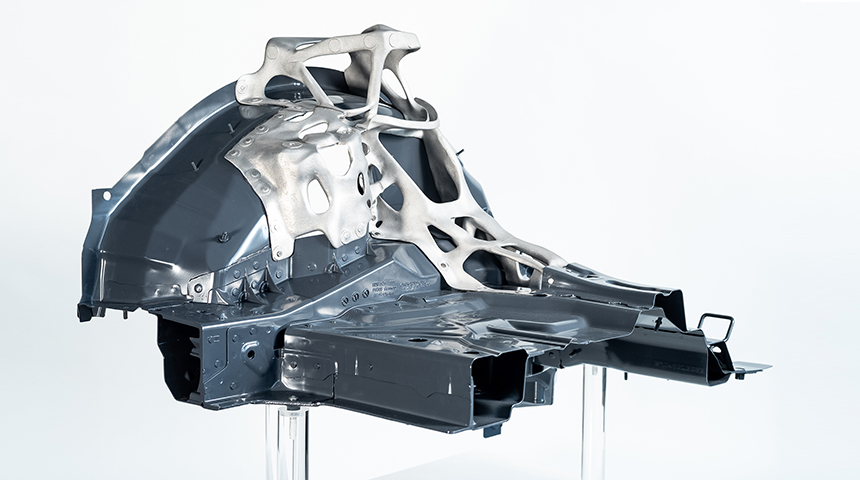17.03.2020 Additive production has huge undisputed potential for revolutionising the production of the future and at the same time achieving new dimensions for lightweight construction. At present, the aluminium alloys available do not yet fulfil the high demands required for them to be suitable for use in the automotive industry. The requirements include things like crash performance and its effectiveness in different situations. In addition, current process design, with which primarily highly resistant yet non-ductile material parameters can be produced, has to be considered.
As part of the BMBF-backed "CustoMat_3D" research project, the EDAG Group, together with eight partners, has developed an aluminium alloy for use in the car, which is able to provide both higher strengths and higher elongations at break. The latter is very important, especially in the event of a crash.
In the last 3 years, we have looked at the entire process chain from powder manufacture through simulation to component development. The alloy definition and powder manufacture was done by the Leibniz Institute for Materials Engineering (IWU) and Kymera International. The processing and process development in powder-based laser beam welding (LBM) was carried out at Fraunhofer IAPT, GE Additive and FKM Sintertechnik GmbH. A simulation of the quick cooling of the welded material in the process was explored by Fraunhofer ITWM and MAGMA Giessereitechnologie GmbH. The demonstration of performance was carried out by Mercedes-Benz AG and EDAG Engineering GmbH with the support of Altair Engineering. This integrated approach is intended to make additive production available to mass production processes. The recently discovered alloy can be used to establish car parts that are significantly reduced in weight.
In a laboratory phase, various alloys were tested initially. It was possible to try out the most promising alloy successfully on different laser beam welding systems. What is special about the alloy is its versatility: a very wide range of properties can be produced from a single alloy. These properties can be implemented flexibly using a downstream heating treatment. From the material values conveyed, material cards were produced that were used in a structure optimisation with the Altair Opti OptiStruct software to reduce the weight of parts of equal power. What is special here is that the requirements of the additive production process and component alignment can be taken into consideration.
Parts from different areas of the car were selected. It was possible to achieve an effective weight-saving both in the dynamic heavy load-bearing wheel carrier and a complex component with high rigidity requirements from the wheel box area. Some of the savings were over 30% of the expected potential. Based on the additive production process, the part can be adapted to the requirements of the vehicle concerned via a load-level model.
In addition, hybrid processes like laser deposition welding and bonding techniques were examined with the recently developed material. In the simulation, it was possible to channel the processes on the microscopic levels of a powder via representative elements in the macroscopic simulation of the part. In this way, a significantly shorter computing time is possible. As a result, residual stresses and delays can be made visible and minimised before production.
The newly developed alloy will be available officially in a few months under the brand name CustAlloy®. The project partners are already drawing a very positive conclusion. Due to the wide-ranging application as well as the corrosion-proofing already carried out, bonding technology and the many other requirements of the automotive industry, the alloy is destined for its first use in mass production. We were able to achieve all the project goals and the new alloy, its production process and the tested simulation methods have given experts effective tools to reduce car weight and the ability to use 3D print technology in mass production.

